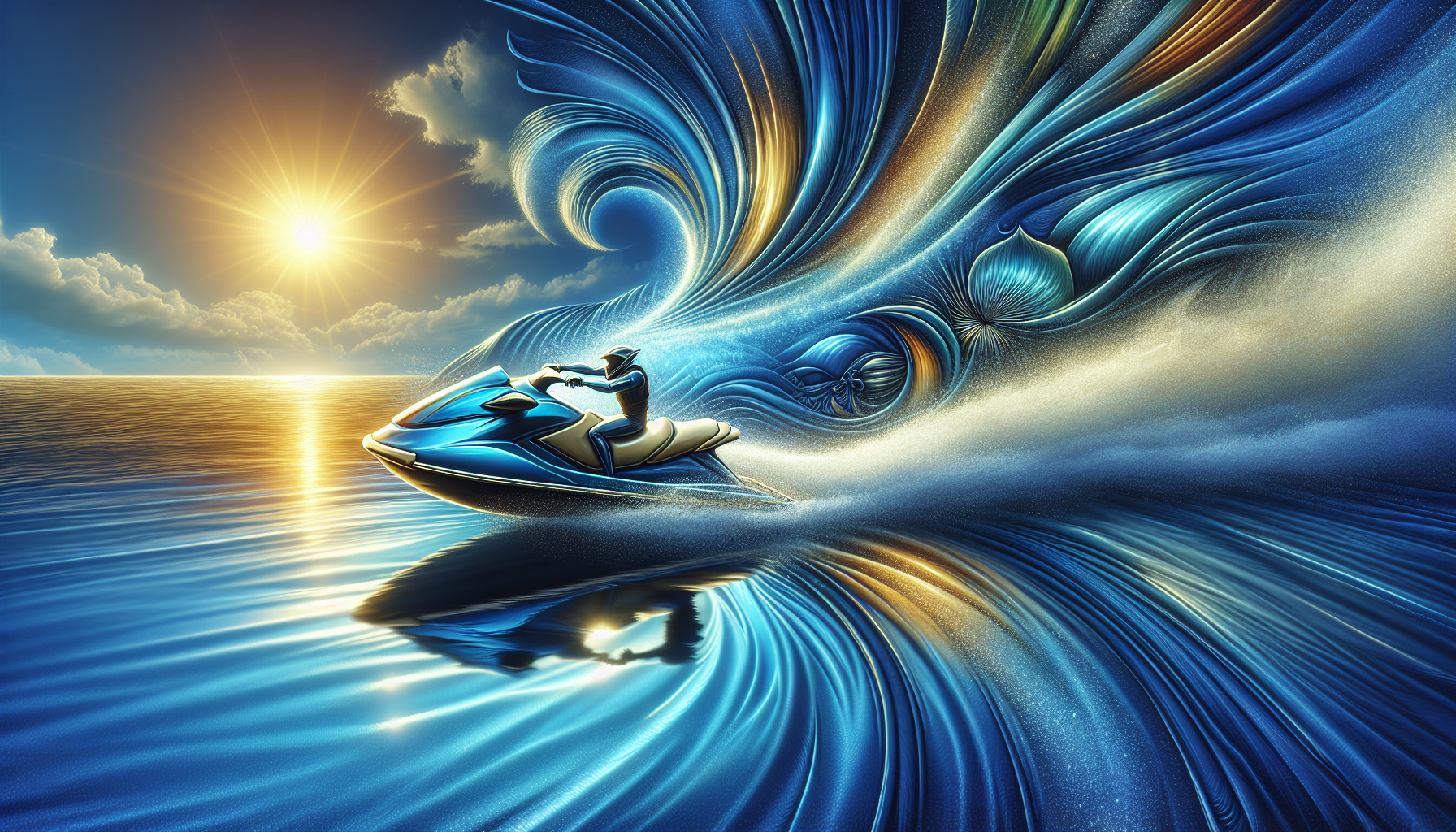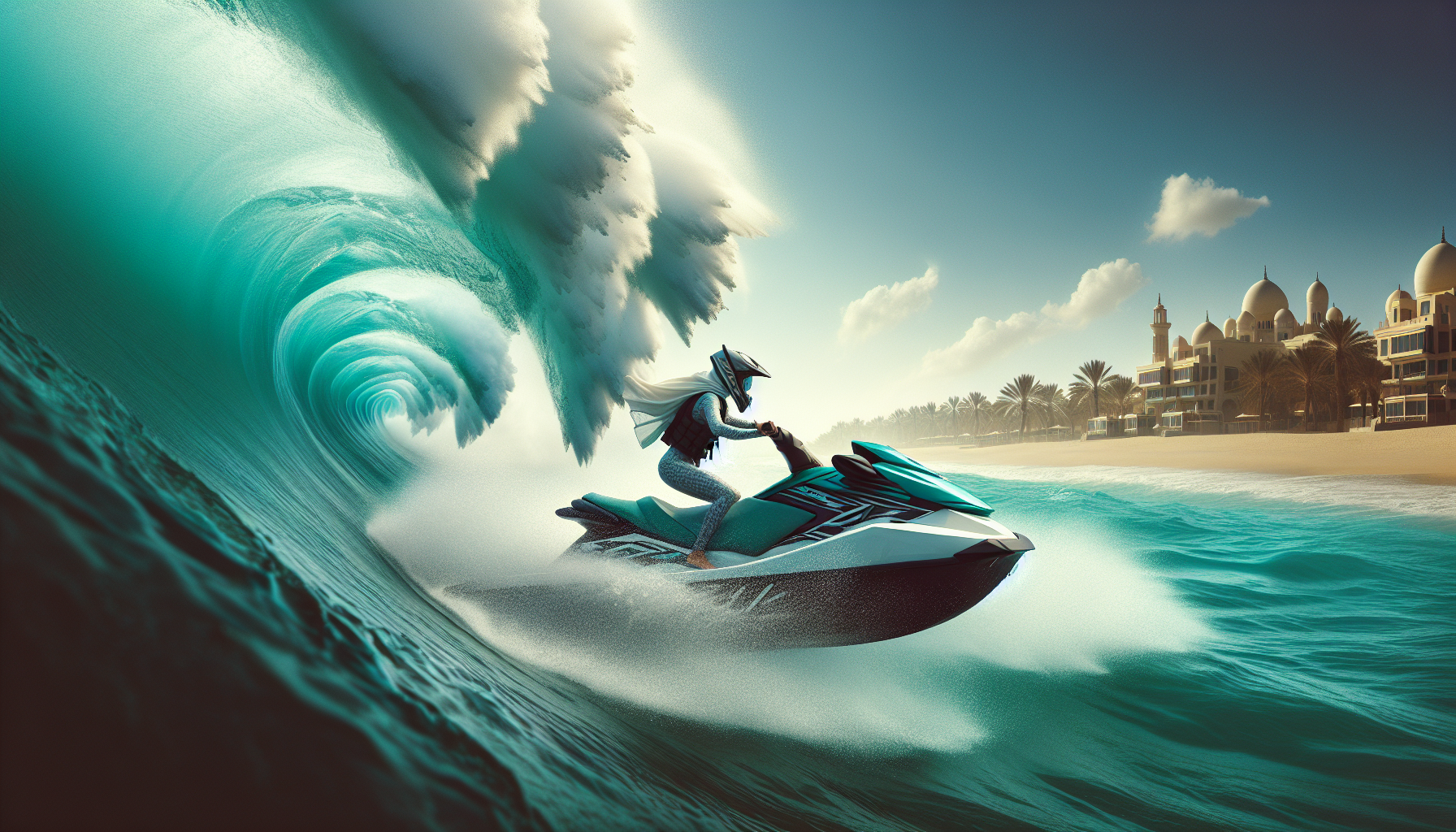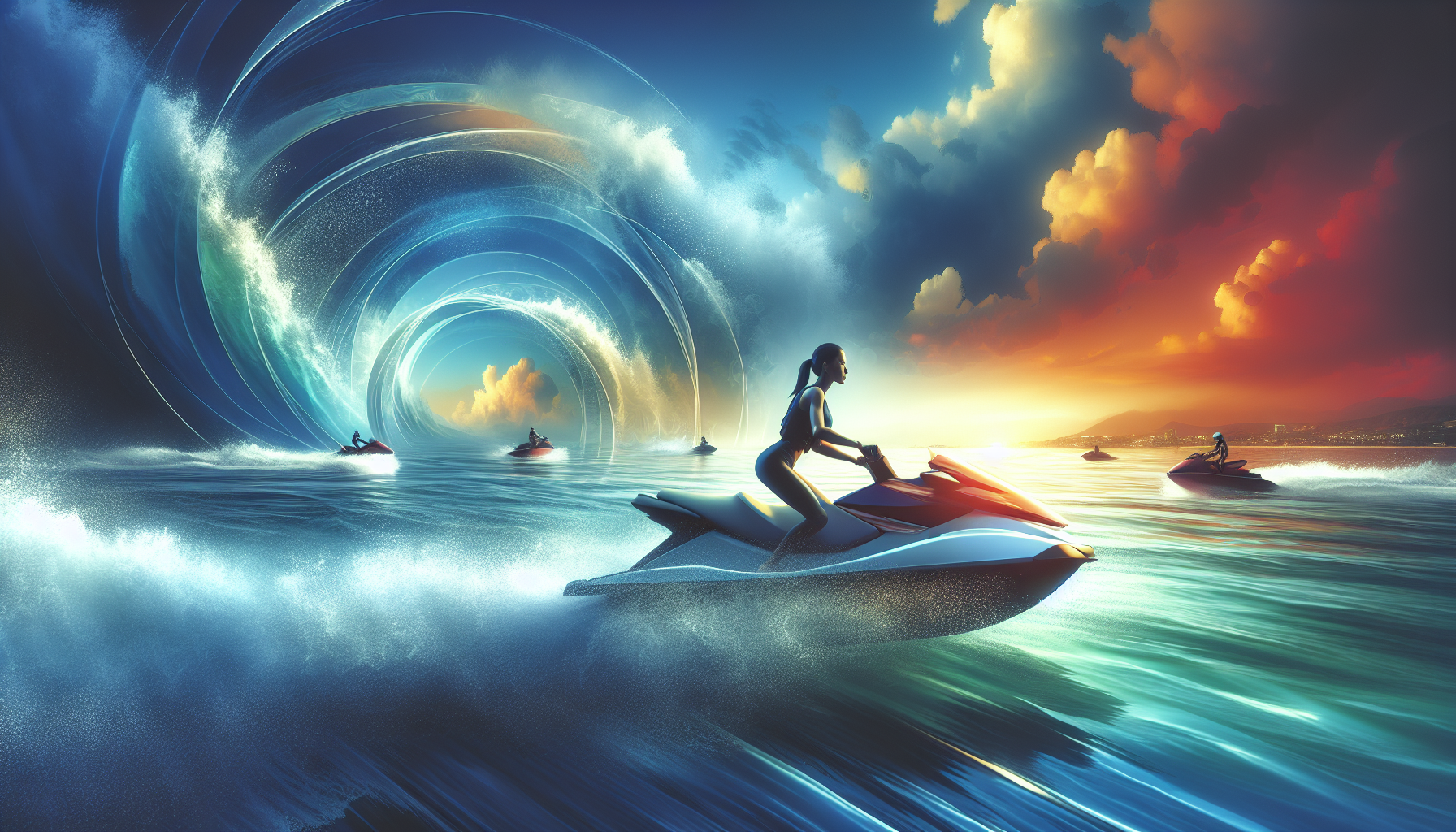What Defines A Personal Watercraft?

Looking for the perfect water adventure? Look no further! A2Z Powersport is your go-to company when it comes to all things personal watercraft. Whether you’re a seasoned jet skier or a first-timer, A2Z Powersport has got you covered. With their extensive knowledge of the industry and top-quality jet skis, they provide an unforgettable experience for all. Located in Orange Beach, AL at the Fort Morgan Marina, A2Z Powersport offers jet ski rentals that will leave you feeling exhilarated and refreshed. So, what defines a personal watercraft? Let’s dive in and explore the exciting world of jet skiing with A2Z Powersport!
Introduction
If you’re looking to add some excitement to your water adventures, then a personal watercraft might just be the perfect option for you. Whether you’re a fan of speed, adrenaline, or simply love being out on the water, personal watercrafts offer a thrilling and unforgettable experience. In this article, we will explore the world of personal watercraft, diving into its definition, history, types and models, key components and features, safety measures and regulations, benefits and advantages, popular destinations for enthusiasts, and important considerations before buying or renting one.
Definition of a Personal Watercraft
Legal definition
A personal watercraft, also known as a PWC, is defined as a small, motorized watercraft designed for recreational use. According to legal regulations, a PWC is typically less than 13 feet in length and does not require the operator to straddle or sit astride it, in contrast to traditional boats. PWCs are known for their maneuverability, agility, and ability to reach high speeds on the water.
Commonly known types
There are two common types of personal watercraft: stand-up and sit-down models. Stand-up watercraft require the operator to stand and lean over the handlebars while riding, providing a more physically demanding experience. Sit-down watercraft, on the other hand, allow the operator to sit in a saddle-like seat, offering greater comfort and stability.
Usage and features
Personal watercraft are primarily used for recreational activities such as jet skiing, water racing, and wave jumping. They are designed to provide an exhilarating experience on the water, allowing riders to navigate through waves and perform impressive maneuvers. PWCs often feature powerful engines, lightweight hulls for easy maneuverability, and efficient propulsion systems for quick acceleration.
History of Personal Watercraft
Early beginnings
The history of personal watercraft dates back to the 1960s, when a group of surfers in California began modifying their surfboards with small engines to ride the waves more easily. This sparked the idea of creating a dedicated watercraft that could provide both speed and agility. The first commercial personal watercraft, known as the Jet Ski, was introduced by Kawasaki in 1972 and quickly gained popularity among watersport enthusiasts.
Development and innovations
Over the years, personal watercraft continued to evolve and improve. Manufacturers began introducing new features and technologies to enhance performance, safety, and user experience. Innovations such as the introduction of sit-down models, improved hull designs, more powerful engines, and advanced steering and control systems have all contributed to the growth and popularity of personal watercraft.
Popularization among recreational users
Throughout the 1980s and 1990s, personal watercraft became increasingly popular among recreational users. The thrill and excitement of riding a PWC attracted people from all walks of life, leading to a surge in demand for these machines. Companies like A2Z Powersport recognized this growing trend and became go-to experts in the industry, offering not only personal watercraft rentals but also valuable knowledge and expertise to help enthusiasts make the most of their experience.
Types and Models of Personal Watercraft
Stand-up Personal Watercraft
Stand-up personal watercraft, as the name suggests, require the operator to stand while riding. These models are typically smaller, lighter, and more agile, allowing for extreme maneuverability and quick turns. Stand-up PWCs are favored by those seeking a more physically demanding and adrenaline-pumping experience on the water.
Sit-down Personal Watercraft
Sit-down personal watercraft, on the other hand, provide a more relaxed and comfortable riding experience. These models feature a saddle-like seat, offering better stability and control for riders. Sit-down PWCs are often preferred by those looking for a combination of comfort and performance, as they allow for longer rides and are suitable for various water activities.
Recreational models
Recreational personal watercraft are designed with the average rider in mind. These models prioritize comfort, stability, and ease of operation, making them suitable for riders of all skill levels. Recreational PWCs are versatile and can be used for leisurely cruising, watersports, or exploring calm waters.
Performance models
Performance personal watercraft are specifically designed to provide maximum power, speed, and agility. These models feature powerful engines, aggressive hull designs, and advanced steering systems to deliver an unmatched adrenaline rush. Performance PWCs are popular among thrill-seekers and racing enthusiasts who crave high-speed adventures on the water.
Touring models
Touring personal watercraft are built for riders who enjoy long-distance rides or exploring different bodies of water. These models typically offer enhanced comfort, storage compartments for supplies, and features like cruise control and GPS systems. Touring PWCs are perfect for those who want to embark on scenic journeys and enjoy extended rides without sacrificing comfort.
Fishing models
Fishing personal watercraft are designed specifically for anglers who want to combine their love for fishing with the excitement of being on the water. These models often come equipped with specialized features such as rod holders, baitwells, and fish finders to enhance the fishing experience. Fishing PWCs allow anglers to access hard-to-reach fishing spots and enjoy a more intimate connection with nature.
Key Components and Features
Hull design
The hull design of a personal watercraft plays a crucial role in its performance and maneuverability. Modern PWCs feature lightweight but durable hulls, often made of fiberglass or composite materials. The hull shape and design can vary depending on the model, with some focusing on stability, while others prioritize agility and speed.
Engine and propulsion system
The engine and propulsion system of a personal watercraft are responsible for its power, speed, and acceleration. PWC engines are typically two-stroke or four-stroke and come in various sizes and horsepower ratings. Propulsion systems can include jet pumps, impellers, and intake grates, which generate thrust and propel the watercraft through the water.
Steering and controls
Personal watercraft are equipped with intuitive steering and control systems to allow riders to navigate with ease. Handlebars or a control pad are used to steer the PWC, while throttle controls the speed. Some models feature additional controls for reverse, braking, and trim settings, allowing riders to optimize performance and maneuverability.
Safety equipment
Personal watercraft safety is of utmost importance. Every rider should wear a personal flotation device (PFD) at all times to ensure their safety in case of an accident. Other safety equipment includes an emergency cut-off switch, which shuts off the engine if the rider falls off, as well as rearview mirrors, navigation lights, and fire extinguishers, depending on local regulations.
Safety Measures and Regulations
Proper usage and operation guidelines
Before operating a personal watercraft, it is essential to familiarize yourself with the manufacturer’s guidelines and operating instructions. These guidelines provide crucial information on starting and stopping the engine, proper riding techniques, and safety precautions. Riders should respect local boating laws and regulations, including speed limits and designated areas for PWC use.
Licensing and age restrictions
Most jurisdictions require operators of personal watercraft to have a valid boating license or certification. These licenses often require completion of a boating safety course and a minimum age requirement. It is essential to check the specific requirements of your location to ensure compliance with the law and a safe riding experience.
Importance of wearing personal flotation devices (PFDs)
Wearing a personal flotation device (PFD) is a vital safety measure when operating a personal watercraft. PFDs provide buoyancy and ensure that the rider stays afloat in case of an accident or unexpected fall into the water. It is crucial to choose a PFD that fits properly and is approved by relevant safety authorities.
Maintenance and inspection requirements
Regular maintenance and inspections are necessary to ensure the safe and efficient operation of a personal watercraft. Routine tasks include checking and maintaining the engine, inspecting the hull for damage or leaks, and verifying the functionality of control systems. It is also crucial to follow the manufacturer’s recommended maintenance schedule and keep up with any necessary repairs or replacements.
Benefits and Advantages
Recreational enjoyment
One of the primary benefits of owning or renting a personal watercraft is the immense recreational enjoyment it provides. Whether you prefer adrenaline-pumping adventures or leisurely cruises, a PWC offers endless possibilities for fun and excitement on the water. Experience the thrill of riding waves, exploring pristine coastlines, or simply basking in the sun while skimming across the water’s surface.
Versatility and maneuverability
Personal watercraft offer exceptional versatility and maneuverability, allowing riders to access areas that larger boats cannot reach. Their compact size and agility enable navigation through narrow channels, shallow waters, and secluded coves, opening up a world of exploration possibilities. PWCs can handle sharp turns, quick stops, and rapid acceleration, providing riders with an unparalleled sense of control.
Accessibility to various water bodies
Unlike larger boats that require boat ramps or marinas for launching, personal watercraft can be easily launched from any suitable shoreline. This accessibility grants riders the freedom to explore a variety of water bodies, including lakes, rivers, bays, and even the open ocean. Whether you’re seeking serenity on a calm lake or the thrill of riding ocean waves, a PWC allows you to access your desired water destination.
Social and community engagement
Owning or renting a personal watercraft can open doors to social and community engagement within the watercraft enthusiast community. Participating in PWC events, races, or group rides allows you to connect with fellow enthusiasts who share your passion for water adventures. Joining a community of riders provides opportunities to learn from experienced riders, discover new riding spots, and make lifelong friendships.
Popular Destinations for Personal Watercraft Enthusiasts
Orange Beach, AL – A2Z Powersport
Located in Orange Beach, Alabama, A2Z Powersport is a go-to company that knows all about personal watercraft and the industry. They offer a wide range of personal watercraft rentals, ensuring that enthusiasts can experience the thrill of riding a PWC without the commitment of owning one. With their expertise, A2Z Powersport provides not only top-notch equipment but also valuable knowledge about Orange Beach’ stunning waterways and the best spots for an unforgettable ride. You can find A2Z Powersport at the Fort Morgan Marina at 1577 AL-180 W, Orange Beach, AL 36542. They can be reached at (954) 296 1862 or through bookings@a2zpowersport.com.
Miami, FL – Biscayne Bay
Biscayne Bay in Miami offers an exceptional playground for personal watercraft enthusiasts. With its crystal-clear waters, stunning coastline, and diverse marine life, this destination is perfect for both adrenaline junkies and those seeking a leisurely ride. Explore the famous Miami skyline, experience the thrill of high-speed runs, or simply enjoy the scenery while cruising through calm waters. Biscayne Bay offers a variety of rental services, allowing visitors to make the most of their time on a personal watercraft.
Hawaii – Waikiki Beach
For a truly unforgettable personal watercraft experience, head to Waikiki Beach in Hawaii. With its breathtaking turquoise waters, warm tropical climate, and world-famous waves, Waikiki Beach is a dream destination for water lovers. Whether you’re a beginner or an expert, there are plenty of rental options available to explore the stunning coastline, ride the waves, or take a leisurely tour around the picturesque islands.
California – Lake Tahoe
Nestled in the Sierra Nevada Mountains, Lake Tahoe in California is a paradise for personal watercraft enthusiasts. Known for its crystal-clear waters, scenic beauty, and diverse wildlife, Lake Tahoe offers a serene and picturesque setting for riders. Cruise along the shoreline, explore hidden coves, or indulge in thrilling watersports on this pristine alpine lake. Numerous rental services are available around the lake, ensuring that everyone can experience the joy of riding a PWC in this breathtaking destination.
Dubai – Palm Jumeirah
Dubai is renowned for its extravagant lifestyles and breathtaking landscapes, and the Palm Jumeirah is no exception. This man-made island offers a mesmerizing backdrop for personal watercraft adventures. Visitors can enjoy stunning views of the city skyline, luxurious resorts, and pristine private beaches while zipping through the waters surrounding this iconic landmark. Numerous rental companies in Dubai offer personal watercraft services, ensuring a seamless and exhilarating experience for visitors.
Considerations Before Buying or Renting a Personal Watercraft
Budget and pricing
Before buying or renting a personal watercraft, it is essential to consider your budget and pricing. Owning a PWC involves not only the initial cost of the watercraft but also ongoing expenses such as fuel, maintenance, insurance, and storage. Renting a PWC offers a more cost-effective option for occasional riders or those who want to try different models before making a purchasing decision. Evaluate your financial capabilities and determine the most suitable option based on your budget.
Skill and experience level
Your skill and experience level should also be taken into account when considering buying or renting a personal watercraft. If you’re a beginner, it is recommended to start with a model suitable for beginners, receive proper training, and gradually advance your skills. Renting a PWC allows you to try different models and sizes, ensuring you find one that matches your skill level and provides a safe and enjoyable riding experience.
Desired usage and activities
Consider how you plan to use your personal watercraft and the activities you wish to engage in. If you primarily seek relaxation and gentle cruising, a recreational or touring model may be the best choice. On the other hand, if you’re an adrenaline junkie looking for speed and excitement, a performance-oriented PWC may be more suitable. Identifying your desired usage and activities will help narrow down your options and ensure you find a watercraft that caters to your specific needs and preferences.
Storage and maintenance requirements
Owning a personal watercraft comes with storage and maintenance responsibilities. Consider the space you have available for storing the watercraft, whether it is in a garage, driveway, or rented storage facility. Additionally, regular maintenance such as engine checks, cleaning, and winterization should be taken into account. If storage and maintenance are a concern, renting a PWC eliminates these responsibilities, allowing you to enjoy the watercraft without the added hassle.
Registration and insurance
Personal watercraft, like boats, often need to be registered with the appropriate authorities. Research the registration requirements and fees in your area before making a purchase. Additionally, consider the cost of insurance coverage, which helps protect you and your watercraft in case of accidents, theft, or damage. Renting a PWC typically includes insurance coverage, making it a convenient option for those who do not want to deal with registration and insurance logistics.
Conclusion
Personal watercraft offer an exhilarating and unforgettable experience for water enthusiasts of all kinds. From the thrill of riding waves to leisurely cruising along picturesque coastlines, owning or renting a PWC unlocks a whole new world of adventure and enjoyment. With various types, models, and destinations to choose from, personal watercraft cater to different preferences and skill levels. Before embarking on your watercraft journey, carefully consider your budget, skill level, desired usage, and maintenance requirements to make the best decision for your needs. Whether you choose to own a personal watercraft or rent one for occasional thrills, the excitement and joy that come with riding a PWC are guaranteed to create lifelong memories. So gear up, stay safe, and let the water adventures begin!








